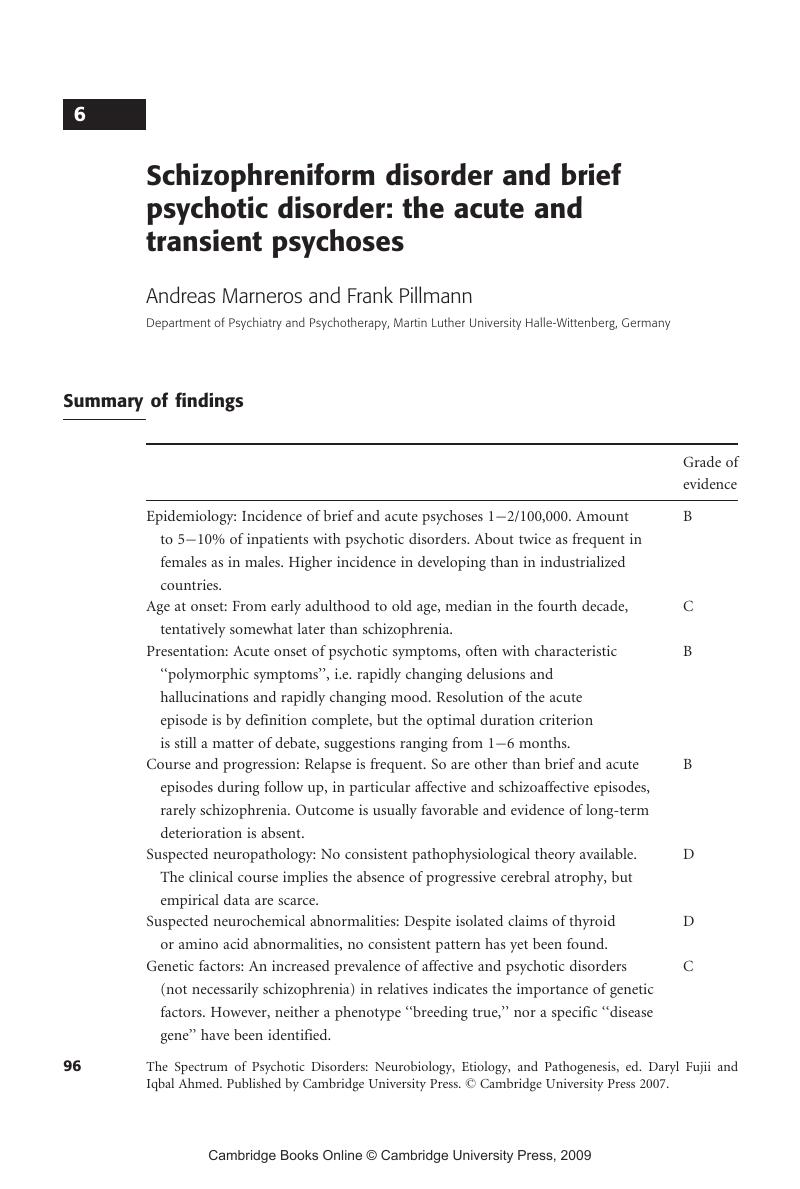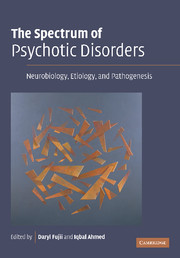Book contents
- Frontmatter
- Contents
- List of Contributors
- Preface
- Acknowledgements
- Part I Introduction
- Part II Primary Psychotic Disorders
- 2 Schizophrenia
- 3 Schizophrenia among Children and Adolescents
- 4 Late-Life Schizophrenia
- 5 Schizoaffective Disorder
- 6 Schizophreniform Disorder and Brief Psychotic Disorder: The Acute and Transient Psychoses
- 7 Delusional Disorder
- Part III Mood Disorders
- Part IV Neurodevelopmental and Genetic Disorders
- Part V Central Nervous System Disorders
- Part VI Substance Abuse and Medications
- Part VII Neurodegenerative Disorders
- Part VIII Sensory Impairments
- Part IX Conclusion
- Index
- References
6 - Schizophreniform Disorder and Brief Psychotic Disorder: The Acute and Transient Psychoses
from Part II - Primary Psychotic Disorders
Published online by Cambridge University Press: 06 January 2010
- Frontmatter
- Contents
- List of Contributors
- Preface
- Acknowledgements
- Part I Introduction
- Part II Primary Psychotic Disorders
- 2 Schizophrenia
- 3 Schizophrenia among Children and Adolescents
- 4 Late-Life Schizophrenia
- 5 Schizoaffective Disorder
- 6 Schizophreniform Disorder and Brief Psychotic Disorder: The Acute and Transient Psychoses
- 7 Delusional Disorder
- Part III Mood Disorders
- Part IV Neurodevelopmental and Genetic Disorders
- Part V Central Nervous System Disorders
- Part VI Substance Abuse and Medications
- Part VII Neurodegenerative Disorders
- Part VIII Sensory Impairments
- Part IX Conclusion
- Index
- References
Summary

- Type
- Chapter
- Information
- The Spectrum of Psychotic DisordersNeurobiology, Etiology and Pathogenesis, pp. 96 - 115Publisher: Cambridge University PressPrint publication year: 2007



